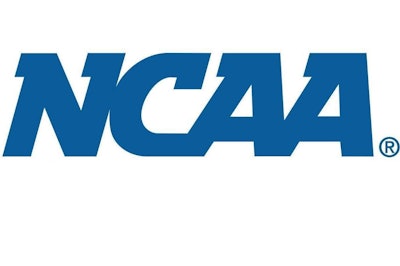
The NCAA's Title IX at 50 report, "The State of Women in College Sports," illustrates the participation gains for female student-athletes, especially for racially and ethnically diverse populations. But the milestone report also outlines the challenges that remain for women in leadership positions and the allocation of resources at member campuses. The NCAA office of inclusion released the milestone report Thursday.
"Now is an important time to take inventory on where we've seen progress across college sports," said Amy Wilson, NCAA managing director of inclusion and the author of the NCAA's Title IX at 50 report. "Though we've made gains in certain areas, we obviously still have work to do. The 50th anniversary of Title IX is a time to celebrate all that's been done and the accomplishments of so many important figures, but it's also an occasion to identify where we need extra attention in the future."
Participation
Both male and female student-athletes continue to set participation records. Throughout the 2000s, participation rates for male student-athletes slightly outpaced those for females. From 2002 to 2020, men gained nearly 73,000 participation opportunities, while women gained over 67,000.
Division I has the highest participation in championship sports for women, with 47% of all student-athletes being female.
Echoing progress reported in the 45th anniversary report, female student-athletes across all NCAA divisions are more racially and ethnically diverse in 2019-20 than in 2000-01. More than 32 percent of female college athletes are minority women, an increase of more than 9 percentage points during the previous two decades. The 2020 data shows that Division I (61 percent white/39 percent minority) has the most diversity among female student-athletes, followed by Division II (64 percent white/32 percent minority) and Division III (78 percent white/22 percent minority).
Leadership Positions
Women hold approximately 25 percent of all NCAA head coaching and athletics director positions and 30 percent of conference commissioner positions
Much progress can be made for minority representation among women in leadership positions in college sports. In 2019-20, 16 percent of female head coaches of women's teams and 16 percent of female athletics directors were minority women. These percentages have increased slightly from five years ago.
Since Title IX's passage, men have gained many opportunities to coach female student-athletes. In 2019-20, men were head coaches of 58.7 percent of women's teams. In contrast, women have had meager increases in opportunities to coach men, holding only 5.8 percent of head coaching positions for men's teams.
In 2019-20, there were 44 women in the 141 conference commissioner positions, including five minority women.
Resources
Expenditures for men's and women's athletics programs in all three divisions continue to rise. Division I continues to have the greatest gap in spending between men's and women's programs. An analysis of total expenses indicates that Division I athletics departments are generally spending twice as much on their men's programs than on their women's programs. The largest gap in spending occurs at the Football Bowl Subdivision level.
Generally, Divisions II and III have more equitable spending on men's and women's athletics programs than Division I. Compared with the 23 percent difference in total expenses between programs in Division I, Divisions II and III both have an 8% spending difference. Over the past five years, this gap has increased by 3 percentage points in Division I and 1 percentage point in Division II, while remaining the same in Division III.
For more on Title IX at 50, visit ncaa.org/titleix50. Click here (PDF) to read the full Title IX at 50 report.




































